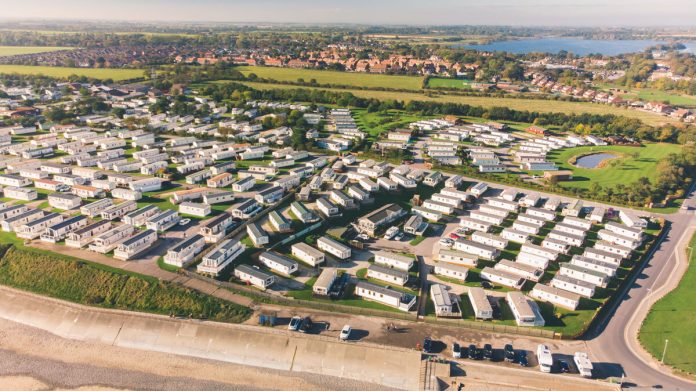How Owners Have Gained the Upper Hand During the Last 10 Years
Fractured. Scattered. Unorganized. That’s where the mobile home park landscape was 10 years ago. When I first entered the commercial real estate industry just a little over a decade ago, I was looking for one thing… opportunity.

When I looked out into the marketplace, the retail, office, residential, and multifamily asset classes were in full swing, organized, and with well-established marketplaces. However, one property type caught my eye — mobile home parks.
Living in one of the states with the most mobile homes in the country, Florida, I quickly realized there was incredible opportunity right in front of me, and no one else was paying attention. In addition to being fractured, scattered, and unorganized the landscape also was primed.
The Opportunity of Mobile Home Parks
I’m fascinated by the evolution of the mobile home park brokerage landscape. It’s a case study of the capitalistic forces at play that can birth a marketplace where none existed. Back then, there was nothing even resembling a marketplace.
I remember speaking with owners that wanted to sell their property to get a first-hand understanding of the process from the seller’s point of view. Almost all transactions were off-market with many buyers using the phone book to find mobile home parks, and driving around to talk directly to owners.
The more tech-savvy owners were sharing a Word doc with property information and highlight, while others may have a folder or had to gather the information when requested. Because many of the properties had been family-owned and generational, many parks didn’t have formal record-keeping or tracking systems in place.
Owners who wanted to sell their properties, whether to retire or cash out and invest in something else, would either sell to a buyer who approached them, a person they had approached, or they’d list with any real estate agent they knew. Sometimes the agents sold commercial properties, often they sold residential, and every now and then you’d find a broker that had some multifamily experience or had previously sold a manufactured home community. However, in many parts of the country, brokers often had to sell other property types to make any real money in the business.
The lack of a marketplace — what was essentially an off-market environment — put owners at a huge disadvantage as sellers. There was no real credible data by the owners themselves or the market to obtain fair pricing based on comparable sales or even yield since information on market rents, park rent rolls, and occupancy rates were scarce. As a result, owners didn’t have the data to substantiate a higher price. In addition, buyers were scarce, so when one did show interest, they had the upper hand. Here’s why:
- Bad rep
Back then, mobile home communities were known as trailer parks. Images of run down parks in blighted areas on the outskirts of town were what was popularized in the media so that was the common concept of them.
- Lack of financing
Blanket mobile home community lending took a huge hit during and after the recession. According to Fannie Mae, after peaking at close to $3 billion in 2007, lending volume dipped below $1 billion in 2010. Most community owners, however, had to hold paper —offer seller financing — to sell their property.
From the brokerage standpoint, the lack of financing made it difficult to scale the business, prompting many to stay out of the game altogether.
- No competitive bidding
The informal, off-market nature of the landscape meant that there was no mechanism for a competitive bidding process.
Buyers either directly approached sellers or they used buyer-focused brokers to approach sellers. This meant that there was one buyer, not multiples competitively bidding to win the property. Cap rates were somewhere in the range of 10 or 12% making it a buyers’ market.
Recognizing the disadvantaged position of sellers at the time and the fractured landscape, I saw an opportunity to change the mobile home brokerage landscape with a seller-focused approach. That’s when I joined Capstone Companies, a native multifamily brokerage founded in 2008 in the middle of the Great Recession. As founder and then director of the manufactured housing division, it was exciting to be one of the first companies to treat mobile home parks like a multifamily asset class.
Something From Nothing
Then, the game changed. In the late 2010s, Freddie Mac and Fannie Mae got in the game with focused programs to finance manufactured home communities. Much of this was driven by the lack of affordable housing and the need to find suitable housing alternatives. This move alone changed the landscape and we now had a legitimate asset class. CMBS followed suit and the industry was ready.
Suddenly it was easier to buy and sell mobile home parks, more brokerage firms started adding manufactured home reps, and we suddenly had the makings of a mobile home community marketplace.
Even though at our shop we were selling properties on-market and creating a competitive bidding process from day one, many owners and brokers were still following the old, off-market model. However, in those earlier days, brokers would approach sellers as buyer representatives. While transaction volume increased, it didn’t do much for the property values or pricing — and as a result, the seller.
Enter the Institutional Buyers
Institutional money made its biggest dive into the industry in 2018 and that’s when things started heating up.
Sniffing out the tremendous value-add opportunity manufactured housing communities represented, new capital from institutional investors put manufactured housing communities on everyone’s radar.
Suddenly buyers were coming out of the woodwork.
In 2019, we had the clear makings of a sellers market as buyers competed for on-market properties driving values and prices up and cap rates down to historically low levels. Often described as a “recession proof” asset class, institutional interest seemingly justified that positioning.
Institutional capital made waves again last year with a resurgence in investments mid-pandemic placing the capital source second only to private money for the year. Further enhancing the asset class’s recession-proof reputation are 2020’s high-occupancy rates and increased inbound capital from REITs, cross-border, and users.
Last year, the pandemic certainly reinforced that concept.
The COVID Test
Manufactured housing was without question one of the best-performing property types over the last year.
The latest Green Street Commercial Property Price Index places the asset in the top spot in terms of change in commercial property values since pre-Covid with +25%.
Self-storage follows with +24% and the much-touted industrial coming in third place with +21%.
During the last year or so, dating to Aug. 2020, manufactured home parks tied self-storage for first with +30% a piece. Industrial followed with +27%.
MH REITs also performed exceptionally well during the last year. In 2020, according to Hoya Capital, “the combination of robust earnings growth and a favorable ‘Goldilocks’ macroeconomic backdrop of lower interest rates and slow-but-steady domestic-led economic growth has lifted the MH REIT sector by another 12% since the start of the year.”
If that doesn’t pass the pandemic test, I don’t know what does.
On top of that, Hoya Capital noted that “Manufactured Housing REITs were the best-performing real estate sector of the past decade, and it wasn’t particularly close.
“The sector produced cumulative returns that nearly doubled the next closest REIT sector. MH REITs outperformed the REIT average for a remarkable seventh straight year in 2019, surging nearly 50%.”
What is Next?
The next evolutionary phase for the industry is a greater demand for data, more consolidation, and more professionally run operations.
Now squarely in front of investors as an accessible investment opportunity through publicly traded REITs that have outperformed other categories, demand for more data and transparency is inevitable.
There are certainly companies out there, like Datacomp with its market data including JLT Market Reports, its sister company of MHVillage, which produces the MHInsider magazine and this blog, that are recognized as leading and credible sources of proprietary data on the industry. Expect to see the demand for independent third-party research to increase.
In addition, we’ll also see continued consolidation and acquisitions and not just by REITs and institutional investors. Be on the lookout for regional consolidation as professional management starts to implement technological and operational efficiencies and community improvements across assets.
Ten years ago, I was looking for opportunity. Now, 10 years and hundreds of seller-focused sales later, I can say I found it. I can’t wait to see what the next 10 years brings the industry.










